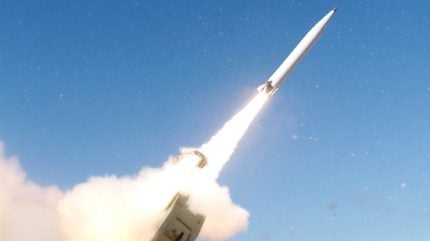
Land-based long-range rockets and artillery systems, commonly referred to as ‘fires’, are among the most critical capabilities being developed for the armies of the UK, US, and Australia, enabling not just ground-effect but also into the littorals as well.
This was among the key talking points during a panel discussion hosted by the US-based Center for Strategic and International Studies (CSIS), which hosted the service chiefs of the Australian Army, the British Army, and the US Army, in an on-the-record discussion on 11 March, 2024 at its Washington site.
All three land services are exploring how to harness the intended benefits of the AUKUS agreement, a trilateral defence pact between the UK, US, and Australia to manage threats around the world first announced in September 2021. Under Pillar 2 of the pact, the three countries armies will explore areas of cooperation in critical technologies development.
While the more well-known Pillar 1, which will see Australia initially lease and then acquire nuclear-powered submarines from the US and UK, has garnered more headlines, the delivery timelines are such as the near-term benefits of AUKUS to the three countries is in Pillar 2. In 2023 the UK, US, and Australia signed a statement of intent identifying areas of cooperation in the months and years ahead.
One key area readily identified by the service chiefs speaking at the CSIS event was in the ability of distributed land forces, operating close to the shoreline, to utilise long-range fires to contribute to the wider anti access, area denial (A2AD) zones created as part of integrated forces operations.
Such capabilities would see land forces able to play a significant role in mainly maritime areas of operation, including in the Asia-Pacific.
Land forces have role to play in the littorals
Lieutenant General Simon Stuart, Chief of the Australian Army, said that the country’s land domain transformation was about “long-range precision fires” and to ensure the ability to maneouvre in the littoral environments.
Following a 2023 assessment of defence strategy, the Australian Army had been “directed to assist” with operations in the littorals, Stuart stated.
General Randy A George, Chief of Staff of the US Army, pointed to the development of the Precision Strike Munition, also known as PrSM, as a capability that would enable land forces to strike well into the maritime domain.
In early March, PrSM manufacturer Lockheed Martin was awarded a further $219m contract from the US Army to ramp up production of the missiles and follows the delivery of the first batch in December 2023.
The PrSM capability is designed to strike targets at ranges of up to 400km and is compatible with existing launch platforms currently in service such as the HIMARS and Multiple Launch Rocket System (MLRS).
Lockheed Martin also claimed in March to have “doubled” the range of the existing Guided Multiple Launch Rocket System (GMLRS) through the new Extended Range munition during test firing at the White Sands Missile Range in New Mexico. This would provide a long-range fires capability of around 150km.
“You are not going to win a war from the seas, certainly not from the air,” said George, talking up the importance of the land domain fight, adding that long range fires, in whatever environment, was going to make “a difference”.
Continuing, George stated the ability of land forces to operate “in a distributed” format, which could see a number of long-range fires platforms spread out of a wide area, would make locating and neutralising such a capability extremely difficult.
To this end, a number of long-range fires platforms could have an impact greater than their acquisition costs, able to target enemy surface warships at distance entering the littoral A2AD zone.



